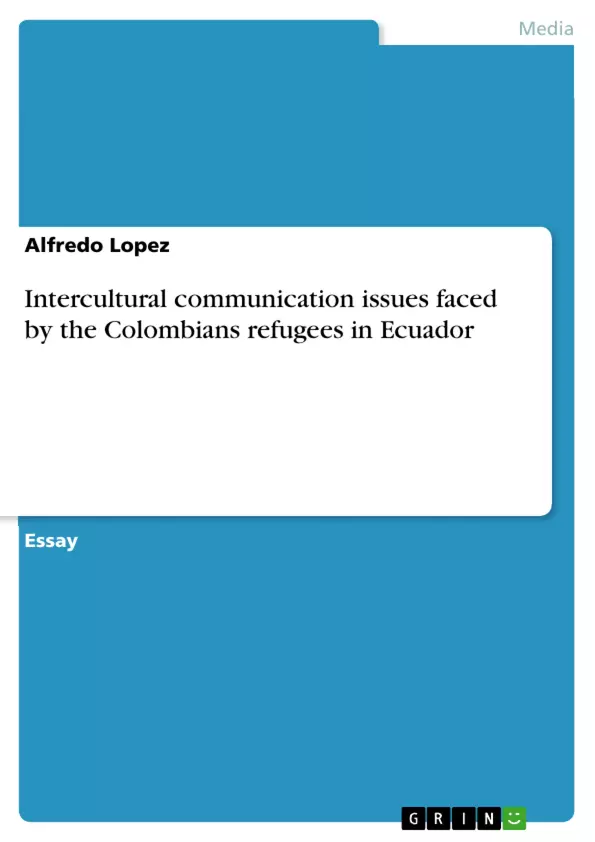Colombia and Ecuador are two brotherly countries of South America, which share the same colours on their flags, like shields and the same political liberator Simon Bolivar, and the two countries face a very complex problem: Intercultural communication issues created by the refugee crisis. The problem of violence that Colombia has faced for over fifty years by illegal armed groups and the national army forces, has led to thousands of deaths, most of whom were not participants of the conflict plaguing this undeveloped South American country.
Inhaltsverzeichnis (Table of Contents)
- Introduction
- Cultural dimensions' theory
- Who is a refugee?
- Discrimination against Colombians in Ecuador
- Persecution suffered by Colombian refugees in Ecuador
- The impact of food insecurity among the Colombian refugees in Ecuador
Zielsetzung und Themenschwerpunkte (Objectives and Key Themes)
This research essay explores the intercultural communication issues faced by Colombian refugees in Ecuador. The essay aims to shed light on the cultural dimensions that contribute to these issues, explain the refugee status and its need for international protection, examine the discrimination against Colombians in Ecuador, and highlight the persecution and food insecurity faced by Colombian refugees. The essay concludes with a summary of the topic and a recommendation for future research.
- Cultural dimensions and their impact on intercultural communication
- The refugee status and its significance in international protection
- The role of discrimination in exacerbating intercultural communication issues
- The persecution faced by Colombian refugees in Ecuador
- The impact of food insecurity on intercultural communication
Zusammenfassung der Kapitel (Chapter Summaries)
- Introduction: This chapter introduces the topic of intercultural communication issues faced by Colombian refugees in Ecuador, highlighting the historical and social context of the refugee crisis and its impact on both Colombia and Ecuador.
- Cultural dimensions' theory: This chapter delves into Hofstede's cultural dimensions' theory, emphasizing the similarities between Ecuadorian and Colombian cultures and how these similarities should theoretically facilitate intercultural communication. The chapter explores the six dimensions of cultural patterns, including individualism vs. collectivism, power distance, and uncertainty avoidance, suggesting that both cultures share collectivist values.
- Who is a refugee?: This chapter defines the term "refugee" and explains the international legal framework that protects refugees and provides them with international protection.
- Discrimination against Colombians in Ecuador: This chapter examines the discrimination faced by Colombians in Ecuador, highlighting the negative stereotypes and prejudices that contribute to the intercultural communication issues.
- Persecution suffered by Colombian refugees in Ecuador: This chapter explores the various forms of persecution experienced by Colombian refugees in Ecuador, providing insights into the challenges and dangers they face.
- The impact of food insecurity among the Colombian refugees in Ecuador: This chapter analyzes the impact of food insecurity on the intercultural communication issues, highlighting how limited access to food resources exacerbates existing problems and contributes to social tensions.
Schlüsselwörter (Keywords)
The research focuses on intercultural communication, refugee crisis, cultural dimensions, discrimination, persecution, food insecurity, Colombia, Ecuador, South America.
- Quote paper
- Alfredo Lopez (Author), 2016, Intercultural communication issues faced by the Colombians refugees in Ecuador, Munich, GRIN Verlag, https://www.grin.com/document/470309



